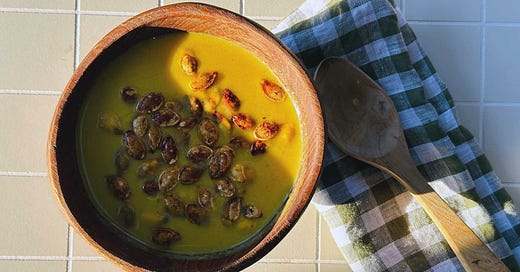Hey Bean Team! Halloween is creepin’ on up, and the jack-o’-lanterns are taking their place on our porches. Pumpkin carving has been around for centuries, but the tradition also has a frightening side: More than 1 billion pounds of pumpkin ends up in the landfill every year, where, like any chucked grub, it breaks down and releases methane, a greenhouse…
© 2025 Fragment Media Group
Substack is the home for great culture




